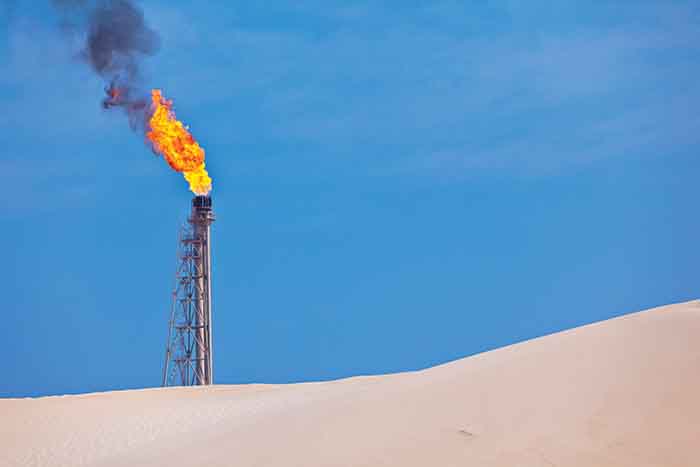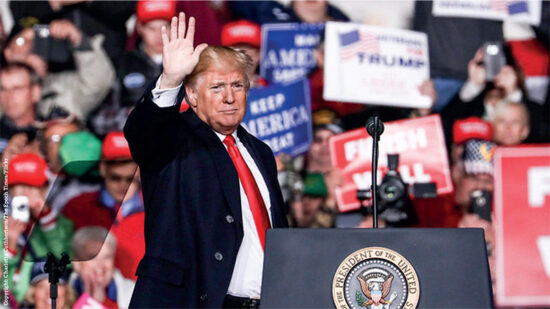Over the last two years of his presidency, Donald Trump has announced a number of game-changing plans including leaving the Paris Agreement on climate change and altering the path of US healthcare by scrapping ‘Obamacare’, says Mike Stoddart, head of equities at Brown Shipley.
However, it is his decision to abandon the Joint Comprehensive Plan of Action, negotiated over 20 months by China, France, Russia, Germany, the UK and the USA, which is currently making waves across the oil market, he argues.
Commonly referred to as the ‘Iran Nuclear Deal’, the plan sought to ensure that Iran’s nuclear activities existed for peaceful purposes only, with its agreement resulting in the lifting of sanctions on the country’s oil exports and enabling Iran to return to crude markets.
As a result of the deal’s implementation on 16 January 2016, Iran’s oil production increased by one million barrels a day in the 12 months that followed.
The Trump effect
However, on 8 May 2018 Trump tweeted his decision to withdraw from the deal, and the 180-day wind-down period embedded in the deal to enable countries and companies to put their affairs in order is due to end on 5 November 2018.
As a result of this decision, markets have already seen a decline in Iran’s oil output ahead of the deadline. Output during the month of September was estimated to be about 10% down, a decrease of approximately 370,000 barrels per day, compared with the average during the first half of the year.
General market consensus is that this will continue to fall by up to 1.5 million barrels per day, a significant lull from its recent peak of 3.8 million.
Oil price impact
In a market that is so close to being in balance, this is a major dislocation – equivalent to about three quarters of the non-OPEC supply growth for 2018 – and the oil price has reacted accordingly.
In an attempt to ease the pressure, the US sold 11 million barrels of oil from its Strategic Petroleum Reserve in August but this had little to no impact on the global market.
Even a plea from President Trump himself via Twitter urging the OPEC ‘monopoly’ to lower its prices went unacknowledged, with the Joint OPEC-non-OPEC Ministerial Monitoring Committee (JMMC) expressing its satisfaction regarding the current oil market outlook, with an “overall healthy balance between supply and demand”.
While the market will eventually react to the positive price signal through increased production, this is often a slow process.
The recent swing producer, the US, is expected to grow its crude oil output by about 1.3 million barrels a day this year and by 1.1 million barrels in 2019. Though this will eventually fill the gap left by Iran, oil prices are expected to remain well supported for the time being and we could see some significant volatility once the 5 November deadline arrives.
The recent murder of the journalist Jamal Khashoggi has added to the uncertainty. However, reports suggest that Saudi Arabia will not respond to any sanctions imposed in the wake of his murder by using a 1973-style oil embargo; Khalid Al-Falih, the Saudi Arabia Oil Minister, recently eased fears of oil shortages by saying that OPEC is in “produce as much as you can mode” and this saw the oil price retreat from its recent high.
Global repercussions
Despite this, the strength of the US dollar means that for many countries the oil price is within spitting distance of the levels seen in 2014, despite the fall in Brent from $100 to $77 (via $26) since then.
This is certainly the case for UK citizens with sterling still suffering in the wake of last year’s Brexit referendum pushing petrol prices close to record highs, but can also be seen more widely with consumers in the Eurozone, Canada, Brazil and South Africa all having similar experiences.
Consumers in India have also been hit hard. While the Indian government has cut duty rates on petrol and diesel in an attempt to ease the burden, local retail prices remain at an all-time high. Despite this burden, the country’s trade figures are pretty healthy – its trade deficit for September was the lowest in the last five months – and its economic growth, at 7.3%, is expected to outpace that of China this year and next.
Investors cheer
Though a higher oil price is bad news for consumers at the pumps, it is great news – at least in the short term – for investors in the oil sector.
For one, the recovery has allowed BP to increase its dividend for the first time since 2014, albeit only by 2.5%.
Elsewhere, the resulting ‘tsunami of cash’ has also enabled Royal Dutch Shell to begin its long promised share buyback programme having already spent over £1.5 billion since these developments were initiated back in July. Currently, the business is able to spend an average of over £25 million every day and is looking to spend at least $25 billion in total by 2020.
Despite this, dividend yields for BP and Shell are almost 6% meaning they will be a shoe-in for ISAs.
Shifting sands
Nonetheless, while investors have cheered the rise in oil price over the last few months, as we move into the longer term it will be harder to determine the investment outlook for the sector with so many moving parts.
The ongoing rhetoric of Donald Trump, OPEC’s stance, as well as the impact of those outside the bloc will continue to keep consumers and investors alike on their toes. Within this rapidly changing environment, one thing will remain key for prudent investors – the value of diversification in a strong portfolio.
Mike Stoddart is Head of Equities at Brown Shipley








